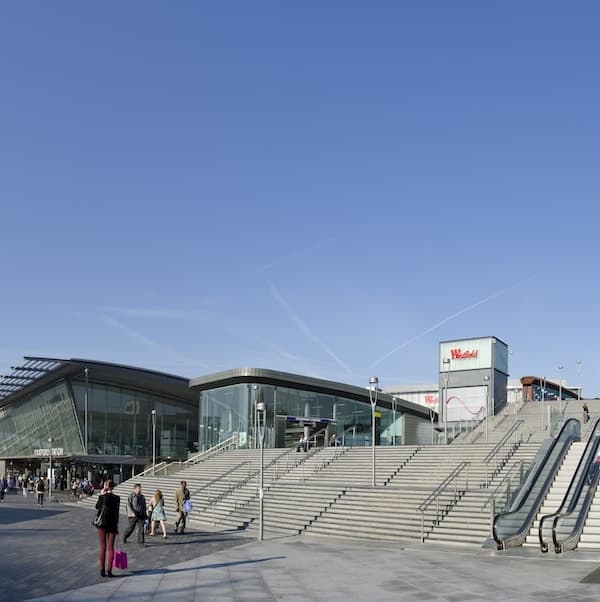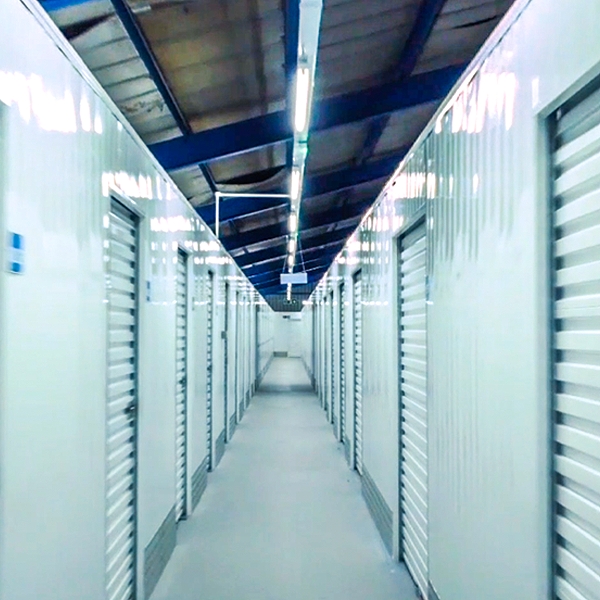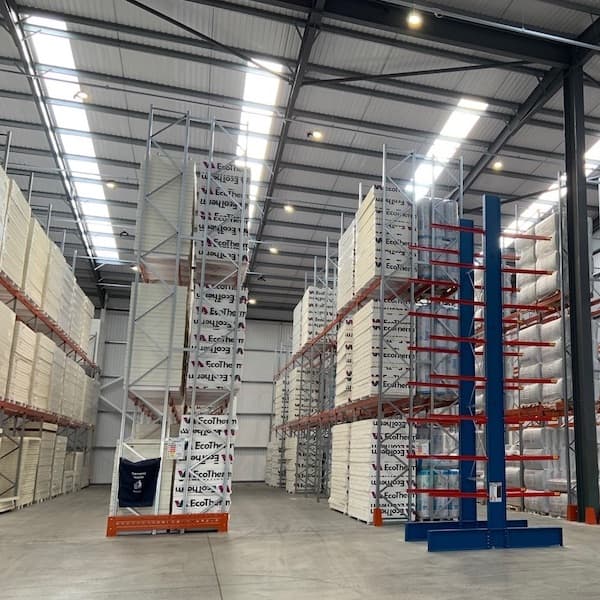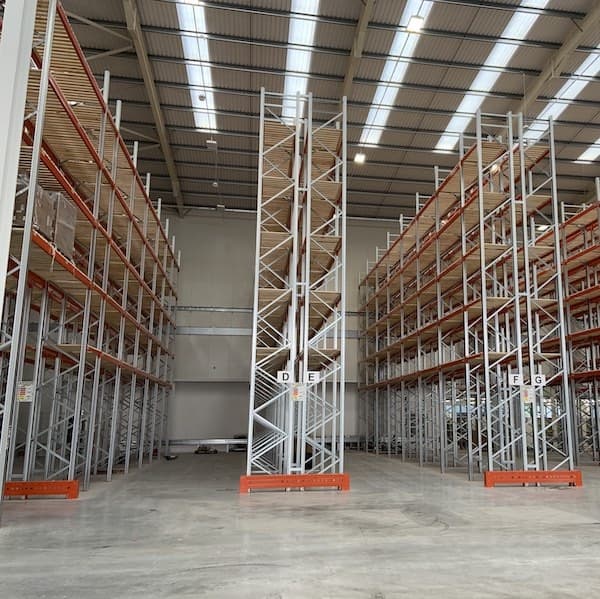- Mezzanine Floors
- Solutions
- Multi-Tier Mezzanines
- Mezzanine Pallet Safety Gates
- Mezzanine Staircases
- Mezzanine Handrails and Balustrades
- Mezzanine Decking
- Fire Protection for Mezzanine Floors
- Mezzanine Lift Shaft Design and Installation
- Resources
- Mezzanine Floor Calculator
- Mezzanine Floor Regulations and Building Control
- Self-Storage Mezzanine Floors
- Self-Storage Units
- Resources
- Self-Storage Site Selection Information
- Calculating The ROI of Self-Storage Conversions
- Planning for Automation in Self Storage
- Racking & Shelving
- Services
- Racking Design
- Racking Manufacture
- Racking Installation
- Racking Inspections
- Retail Racking And Shelving Systems
- Solutions
- Cantilever Racking
- Pallet Racking
- Coil Racking
- Longspan Shelving
- Tyre Racking
- Kimer Racking
- Live Storage Racking
- Drive In & Drive Through Racking
- Clip Shelving
- Mobile Shelving
- Custom Fabrications
- About Us
- USS Case Studies
- Self-Storage Fit-out For Raked Ceiling Building
- Mezzanine And Staircases For Entertainment Venue
- New Mezzanine And Staircases For Major Retailer
- Mezzanine Pallet Safety Gate
- Self-Storage Fit-Out Project For Brand New Facility
- Warehouse Racking, Wire Mesh & Shelving for New Warehouse
- Self-Storage Partition System & Components Installation
- Self-Storage Store Mezzanine And Staircases
- Multi-Tier Mezzanine For Logistics & Distribution Facility
- Warehouse Plant Platform
- Self-Storage Facility Space Expansion
- Mezzanine Floor For Distribution Warehouse
- Bespoke Feature Staircase & Mezzanine
- Single Level, Multi-Use Mezzanine
- Mezzanine For A New Building
- Mezzanine Floor For Plumbing Supplies Warehouse
- New Racking System and Mezzanine Floor
- Car Park Conversion To Self Storage Facility
- Pallet Racking and Cantilever Racking For Warehouse
- Two Mezzanine Floors For Self-Storage Facility In Birmingham
- Our Accreditations
- Contact Us
- USS Case Studies
The Latest Blogs From USS
Smart Warehouses - Is The Future Already Here?
read
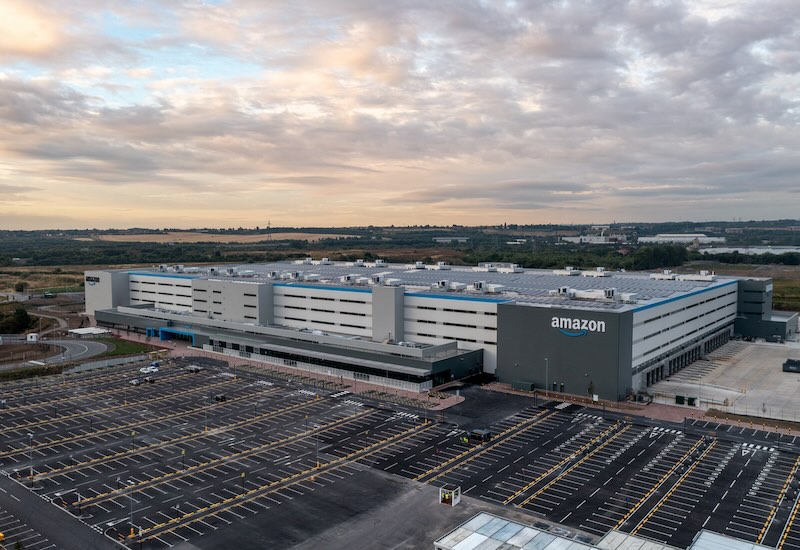
Anyone involved in building or operating a warehouse will probably already have played a part in the rise of the smart warehouse phenomenon, whether they’ve thought of it in those terms or not.
The use of automation across all aspects of warehouse operations – from conveyors to robotic picking arms and management software – has become increasingly ubiquitous in recent years, particularly given the post-COVID boom in ecommerce and the extra demand placed on warehouse spaces such as fulfillment centres.
The Holistic Smart Warehouse
The concept of the smart warehouse, of course, involves more than just the application of isolated examples of automation, since it describes a holistic approach to the use of technology across all aspects of warehouse operations.
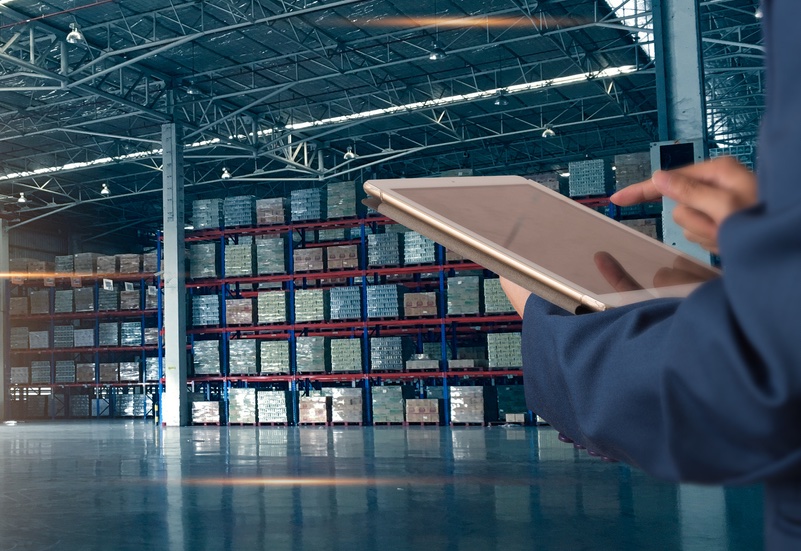
For anyone who has seen waves of tech hype come and go, the question will always be whether the smart warehouse represents the wave of the future, or simply the triumph of good PR over real-world experience.
Let’s take a closer look at what’s been happening.
The Smart Warehouse Market
The statistics covering the size of the smart warehouse market and the predicted growth levels are enough to confirm that the concept, at least, is very definitely here to stay. According to figures published by Precedence Research the global smart warehouse market was worth roughly $26.10 billion in 2024 and should reach around $98.64 billion by 2034, a growth rate of 14.22%.
Taking a wider overview of the supply chain reinforces the shift toward automation. The MHI Annual Industry Report – a survey of the supply chain industry based on input from more than 1,700 supply chain leaders worldwide – found that 74% of all leading supply chain companies were increasing their technology investments, with 90% of those planning on spending more than $1 million during 2024.
Drivers of the Smart Warehouse Revolution
The shift toward smart warehouses is primarily driven by the age-old search for more efficient operations and lower costs. This can be regarded as a given – isn’t every shift in warehouse operations intended to deliver more efficiency for less money?
Still another of the key drivers is perhaps less predictable. Across the whole supply chain and logistics industry, there is an issue with employing enough people to keep the systems running. This workforce challenge initially emerged during the COVID-19 crisis, when the sudden and massive spike in demand for online goods caught all parts of the supply chain unawares and short-staffed.
In the years since, however, the issue has stubbornly refused to resolve itself. A 2024 study by Descartes Systems Group, global suppliers of supply chain software, found that 76% of the supply chain and logistics leaders surveyed were experiencing notable workforce shortages in their operations, with 37% describing the shortage they were dealing with as ‘high to extreme’.
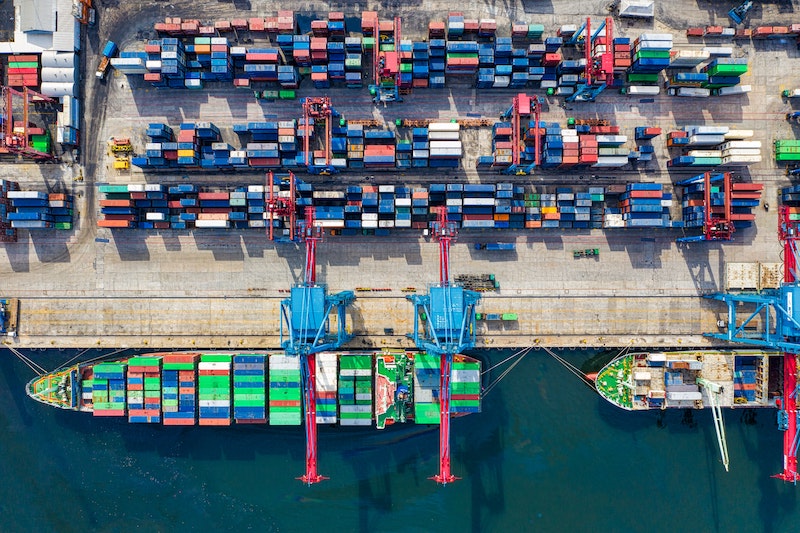
As well as the inevitable impact that workforce shortages of this kind are bound to have on financial performance, the survey found that 58% of respondents felt that the shortages had negatively affected customer service performance. Although this survey covered logistics operations and the supply chain, it also examined specific organisational functions. It found that the areas suffering the most from workforce shortages were shipping and transportation operations at 61%, followed closely by warehouse operations at 56%. To a considerable degree, the shift toward smart warehouses is designed to maintain and expand existing warehouse operations in the face of these ongoing workforce shortages.
One caveat to this approach is that 55% of supply chain and logistics leaders said that knowledge workers were now the hardest to hire and that these knowledge workers are going to play an increasingly important role in the warehouse sector as smart warehouses lead to operations becoming increasingly data-driven and technology-enabled.
The Components of a Smart Warehouse
It might be worth taking a look at the basic components that come together to make up what could be described as a smart warehouse since it’s an umbrella term that covers a range of options. Like many of these descriptors, it’s really the unified application of multiple options that transforms a warehouse featuring some aspects of automation into one that could accurately be described as ‘smart’.
Warehouse Automation
Warehouse automation is the characteristic of a smart warehouse that most people are likely to think of when hearing the phrase, and the one that deals most directly with the issue of workforce shortages. In simple terms, automation of this kind involves robotic systems handling tasks that would previously have been delivered by manual labour.
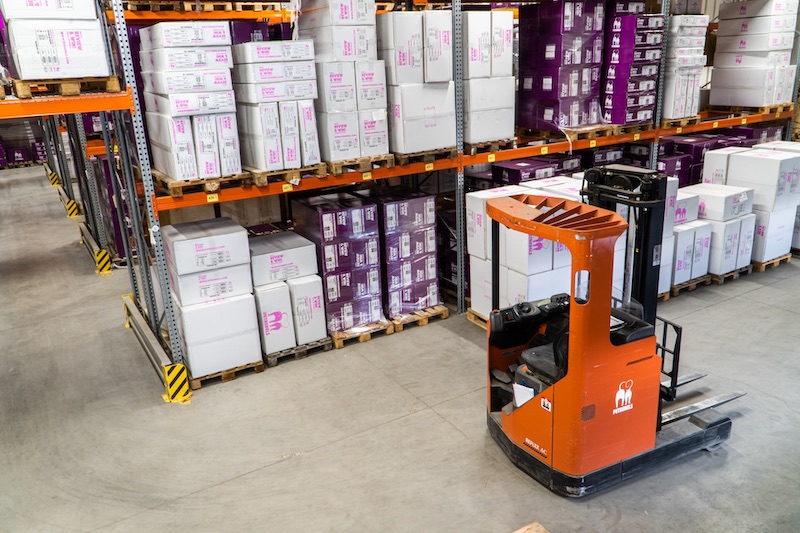
Examples include automated guided vehicles (AGVs) and autonomous mobile robots (AMRs). In the past we’ve written blogs about automation as a possible solution to workforce shortages, and detailed initiatives such as Amazon’s Sequoia robotics system. While these examples represent the kind of change that can be achieved only with massive amounts of investment, they do flag up the general direction of travel. In other words, what Amazon warehouses do today, the rest of the warehouse sector will replicate in some shape or form before too long.
Warehouse Management Systems
Warehouse Management Systems (WMS) are based on software that offers real-time tracking of order fulfilment, inventory, and every other aspect of warehouse logistics. Within these systems, picking, packing and shipping processes can be automated, increasing accuracy and reducing costs. Inventory management software, in particular, can play a huge role in reducing waste and optimising stock levels. The most advanced models incorporate AI to track external factors such as weather patterns and traffic conditions, which might impact movement in and out of the warehouse, and thus on inventory levels and requirements.
RFID Scanning Systems
Radio Frequency Identification (RFID) scanning systems are the foundation upon which inventory tracking and WMS are built. The technology enables items to be identified and tracked within a warehouse wirelessly, offering a seamless and highly accurate alternative to the limitations of traditional barcode based systems.
Internet of Things
The Internet of Things (IoT) revolution within the average household may have ground to a halt somewhat, with most people deciding that they don’t want to send WhatsApp messages to their fridge freezer. A warehouse, however, provides an environment in which the ability of machines, people, and stock to exchange real-time data whilst moving through the warehouse systems is invaluable.
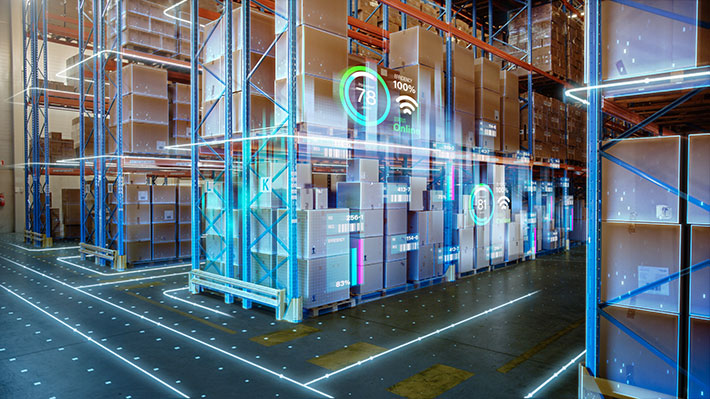
IoT technology enables all aspects of the warehouse operation to become part of a single integrated system, massively simplifying efficient management. When every employee, autonomous robot, and all items of stock and types of storage unit and racking solution can connect and share data in real time, the ability of managers to take an overview of operations as and when they happen, rather than with hindsight, means that they can be both flexible and agile.
Immersive Tech
Immersive tech such as virtual reality (VR) and augmented reality (AR) is at the furthest reaches of the technology, playing a part in creating smart warehouses. While neither of these, as yet, seems likely to play a significant role in the day-to-day operations of any warehouses, they can undoubtedly help in areas such as employee training and task optimisation.
The optimisation of operations across a warehouse could be enhanced by the use of AR and VR to create ‘digital twins’, exact digital copies of the warehouse environment which can then be used to asses factors such as throughput, WMS messaging, stock control and the likely response of existing systems to various hypothetical scenarios. The digital twin of a warehouse can be used to test any proposed new technology in depth before installation and implementation, but without any disruption.
Fleet Management Software
Fleet management software can optimise the use of forklifts and other vehicles within a warehouse. This software can now use IoT technology to track the vehicles in real time, meaning that all operations can be tweaked and modified as and when needed to offer the smoothest possible workflows and maximum efficiency.
Performance analytics can be gathered and used for forward planning (or fed into a digital twin – see above), and operations such as maintenance scheduling can be automated, based not only on the calendar but also on feedback from the machines in question.
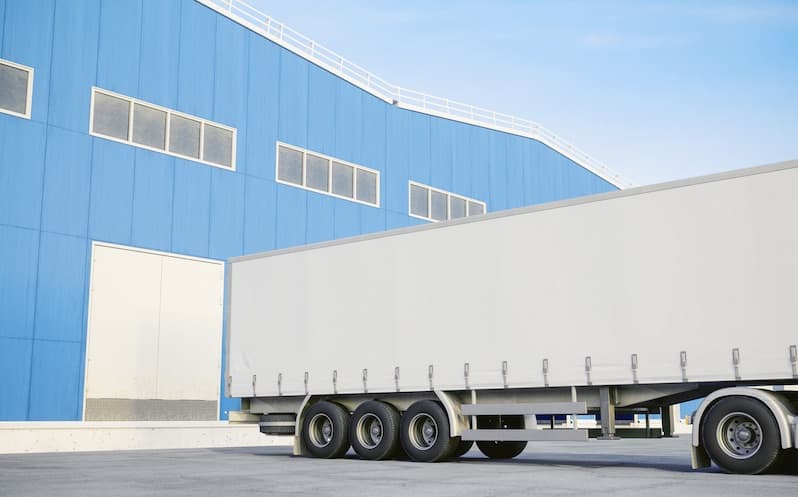
Barriers to Smart Warehouses
When the options and advantages of smart warehouses are set out in this manner, they seem like an entirely inevitable choice. Still, the fact of the matter is that, out in the real world, the prohibitive cost of such technology has prevented the fully integrated smart warehouse option from becoming anything like the norm.
Prohibitive Costs
News and media around the topic tend to focus on large players such as Amazon, Gap and Walmart. Something like the April 2024 announcement by Amazon of two new, large-scale, robotics-driven fulfilment centres in Western Sydney, Australia – the centres will cover 685,000 sq. ft. at a cost of $490 million – is undoubtedly an eye-catching example of the evolution of smart warehouses, but it doesn’t reflect the majority's experience
Statistics that track the spread of smart warehousing across the warehousing industry can be skewed by the larger players, such as Amazon, which take up a disproportionate percentage of the e-commerce sector as a whole. Their commitment to smart solutions can also be distorting.
For many warehouses, therefore, the risk of not adopting a fully smart approach and thus being left behind by the competition is often still outweighed by the cost of doing so. The result is that many operatives adopt smart solutions piecemeal, as and when they feel they can afford them. This, in time, can lead to different automated aspects of a warehouse operating in their silos, something which defeats the object of the integrated smart warehouse approach.
Customisation Issues
Another barrier to adoption is that warehouse automation solutions are tricky to purchase on an ‘off the peg’ basis and require extensive customisation to work within a specific warehouse setting.
This process and the operation of automated solutions on a day-to-day basis both require specialist know-how. As noted above, the kind of knowledge workers equipped with the ability to plan, project manage, and operate tailored smart warehouse systems are amongst those caught up in the industry-wide workforce shortage.
Routes to a Smarter Warehouse
Automation on Subscription
One possible solution to the prohibitive cost of applying automated technology across a warehouse - as reported in Forbes magazine - is the rise of the Robots-as-a-Service (RaaS) model.
This approach applies the subscription model to much of the software used in modern systems (SaaS - Software as a Service) to state-of-the-art robotics technology. The fact that robotics can be accessed without the normal capital outlay is supplemented by access to ongoing maintenance and support. As well as enabling warehouse managers to access automated technology as a temporary addition to their systems during times of peak demand, the RaaS model also offers a means of trying out the technology to see if it delivers before taking the plunge and fully investing.
Take it One Step at a Time
For many businesses, the journey to full automation and a genuinely smart warehouse will involve introducing automation in one area at a time, embedding and evaluating the technology before rolling it out across other parts of the warehouse operation.
Operational areas particularly suited to this gradual introduction of automated technology include order assembly, cross-docking, inbound storage, and picking.
This blog is for information purposes only and should not be construed as legal or financial advice and not intended to be substituted as legal or financial advice.
Find Us
S & L United Storage Systems Ltd
United House, The Street
Takeley, Bishop's Stortford
Hertfordshire, CM22 6QR
Company No. 1313816
VAT No. 291616253Say Hello
01279 871 787Copyright © 2025 S & L United Storage Systems Ltd. All rights reserved.
- About Us

